How to Hide Files and Folders on Mac El Capitan / macOS Sierra
Summary
Want to hide the important files and folders on your Mac El Capitan (macOS Sierra Beta) but don’t know how? Follow this guide to learn how to solve this with ease.
MacClean – Mac Performance Optimizer 
Have a free try on MacClean and use it to clear junk files, optimize your Mac performance, and secure it. Now read on this guide to know how to hide a file on Mac Yosemite.
Files and folders on your Mac El Capitan (macOS Sierra Beta) may be filled with the important business data, personal information and more. Therefore, hiding files and folders is a good choice to keep them safe and private.
However, speaking of hiding files on an Apple Mac, it is not as easy as it be on a Windows computer. We can easily hide a file on Windows by checking the Hidden option, but on a Mac, that's not working. In this post, we will show you how to hide files on El Capitan or macOS Sierra Beta, and also tell you how to view the hidden files as well as unhide them.
Also Read: How to Permanently Remove Files on Mac >
Part 1. How to Hide Files and Folders on Mac
To help you quickly solve the issues of hiding files and folders, here we have collected several safe & reliable solutions to make it easy. However, some of the solutions may be difficult and complicated to follow, check the detailed instructions carefully and you can overcome.
Solution 1. Using Terminal to Hide Files and Folders
Built-in with Mac, Terminal is the default application that can help to hide files and folders with few steps. If you have never use it to hide your individual files, please follow the step-by-step guide to complete this.
Step 1. Click Finder > Search Terminal on This Mac > Open Terminal.
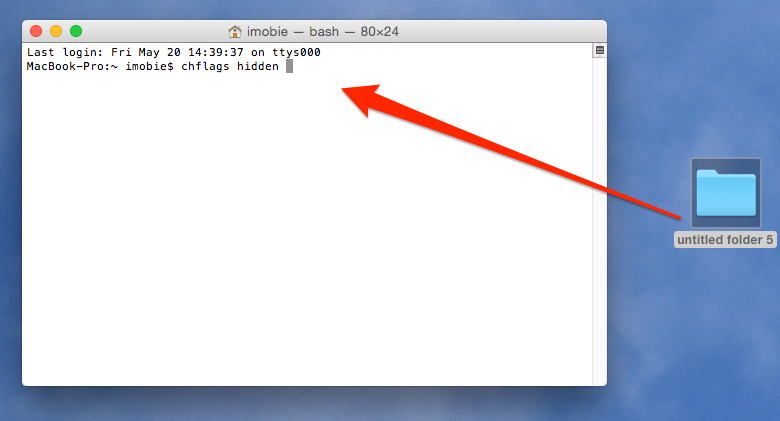
How to Hide Files and Folders on Mac via Terminal - Step 1
Step 2. Drag and drop the files and folders you want to hide to Terminal, and the path of the file will show. Hit Return and the file will "disappear" from your Mac.
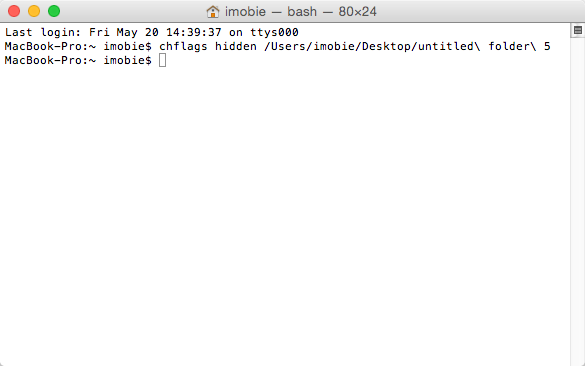
How to Hide Files and Folders on Mac via Terminal - Step 2
Also Read: What Is Other in Mac Storage and How to Delete It >
Solution 2. Using Disk Utility to Encrypt Folders
While not necessarily hiding files and folders on your Mac, encrypting them can also keep the personal files safe that only you can access. You can download various encryption unities to encrypt files and folders, and here just try using Disk Unity to complete this.
Step 1. Open up Disk Utility (type in Disk Utility in Spotlight Search and hit Enter) > Go up to the menu bar and navigate to File > New > Disk Image from Folder.
Step 2. Select the folder you want to encrypt and click Image > Name it and ensure you select 256-bit AES Encryption in the drop-down next to Encryption > Hit Save > Enter with your own password and click OK.

How to Hide Files and Folders on Mac - Using Disk Utility to Encrypt Folders
Note: except for hiding files and folders on your Mac, you can also delete the unwanted files to protect your privacy. To completely remove the files you don’t want, it is recommended you just try MacClean.
Solution 3. How to Delete Unwanted Files and Folders on Mac
MacClean is a flexible and comprehensive Mac clean tool only one-click. With it, you can clean up space of your Mac on the go and never worry about the issues of insufficient storage. Besides, it also enables to protect your internal activities from spying eyes. It is also a duplicate file finder that help you quickly and thoroughly delete unwanted files on your Mac, simply download MacClean and then follow the detailed steps bellow:
Step 1. Launch your MacClean on the Mac > Click "Utilities" > Choose "Duplicates Finder" option:
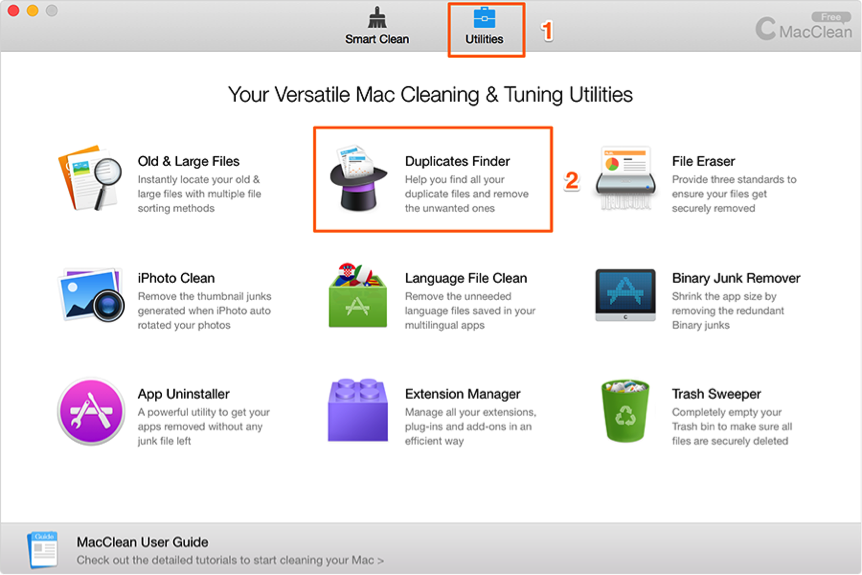
How to Hide Files and Folders on Mac – Deleting Unwanted Files - Step 1
Step 2. Choose the Default Folders > Tick the folder you want to scan > Click Scan Files > Click Remove button to clean files you selected.
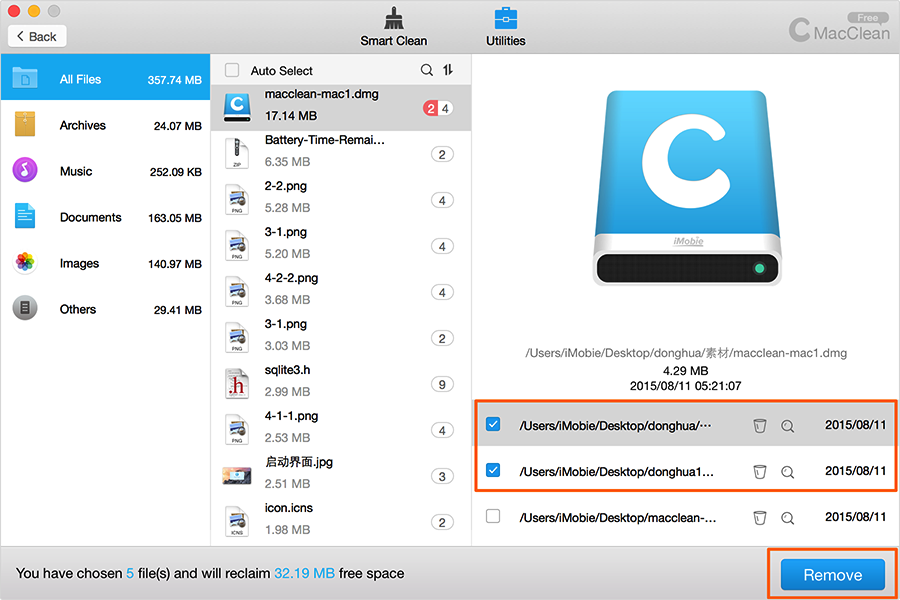
How to Hide Files and Folders on Mac – Deleting Unwanted Files - Step 2
Don’t Miss: How to Check and Free Up Space on Mac >
Part 2. How to Show and View Files and Folders on Mac
Some Apple users may wonder how to view the hidden files and folders on Mac, and here we also give you the tips to solve this. In fact, Finder on Mac doesn’t offer a graphical option to let you find those hidden files and folders, but you can also make the hidden files and folders shown by following this:
Step 1. To view hidden files on Mac, firstly open Terminal.
Step 2. Run the following commands in it, and end by hitting Return:
defaults write com.apple.finder AppleShowAllFiles TRUE
killall Finder
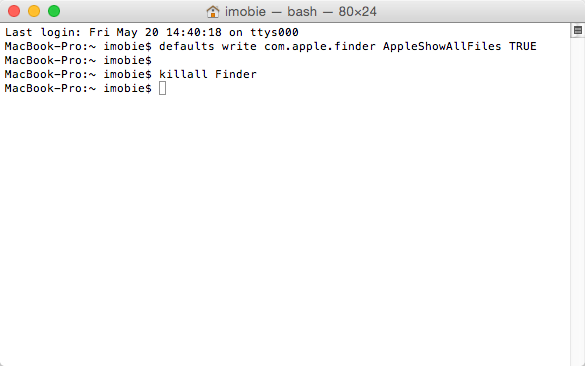
How to View Hide Files and Folders on Mac
Part 3. How to Unhide Files on Mac Yosemite
Still don't know how to unhide files and folders on your Mac? The solution is so simple: Run the same commands you ran before during viewing the hidden files and folder, but the only difference is that change “hidden” to "nohidden".
Step 1. To unhide a file on Mac, you need to open Terminal again.
Step 2. Enter the command: chflags nohidden, and end with a space.
Step 3. Unhide the file with steps in Part 2.
Step 4. Now drag the hidden files to the Terminal. Press Enter.
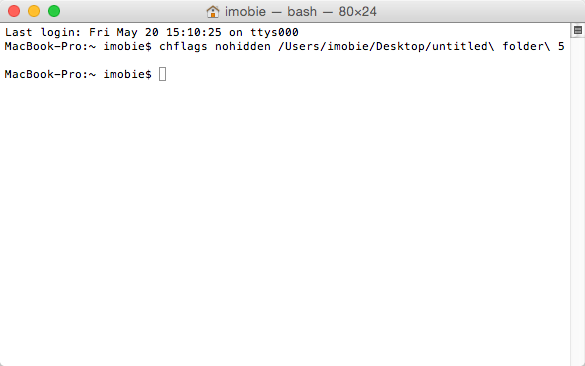
How to Unhide Files on Mac
Note: If you remember the exact path of the folder or file, you can type it into the terminal. If you don’t, you can use the above trick to display hidden files and folder in the Finder and drag and drop that hidden file or folder into the Terminal, as you did earlier.
Also Read: Do I Need Antivirus for My Mac >
The Bottom Line
Now you can easily hide, view and unhide a file on Mac with the above methods. And if you wan to clean up, optimize and secure your Mac, try MacClean.
Top Posts on Cleanup and Speed Up Mac Computer
-

2017 Top 4 Mac Cleaners for Mac Computer > Joy. May 26th, 2017
-
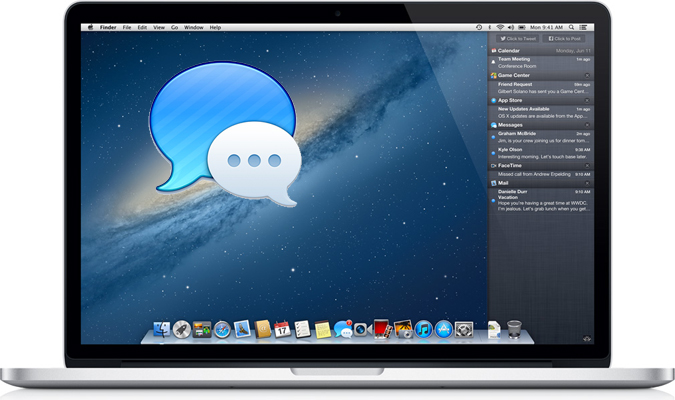
How to Delete iMessages on Mac Permanently > Joy. May 23rd, 2017
-

Why is My Mac So Slow And Speed It Up > Joy. May 23rd, 2017
-

3 Methods to Clear Cache on Mac >Joy. June 14th, 2016
-
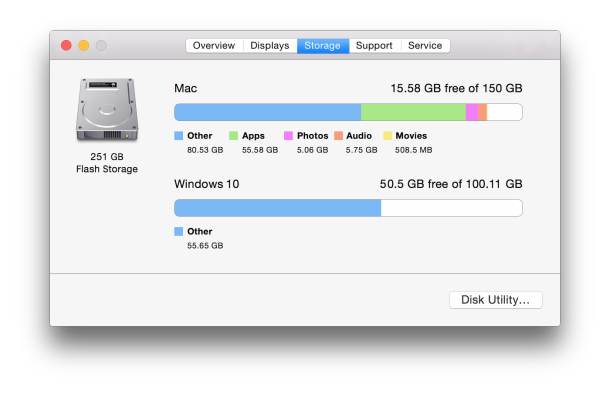
8 Tips to Free Up Space on Mac > Joy. July 12nd, 2017
-
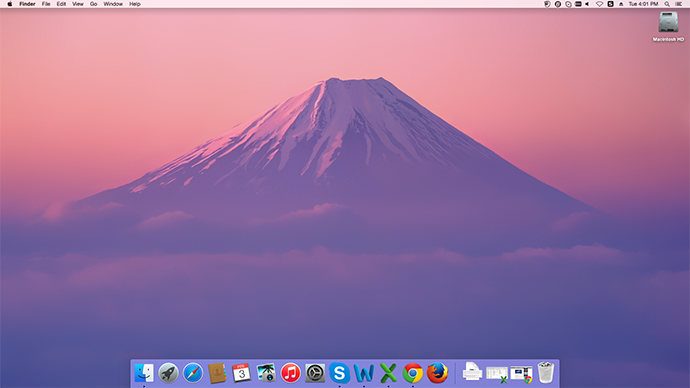
How to Optimize Your Mac to Make It Faster > Joy. Sept 28th, 2016
-

Find & Delete Temporary Files on Mac > Joy. March 28th, 2016
More Related Articles You May Like
- How to Tell If My Mac Has a Virus - Now read on to know can an Apple computer get viruses. Read more >>
- How to Check Virus on Mac to Keep It Safe - We will show you a free virus scan to check and find the virus on your Mac. Read more >>
- Why is My Mac So Slow – There are some effective ways to fix your slow Mac computer. Read More >>
- How to Delete Junks on Your Mac – This post offers one simple method to clean Mac junk. Read More >>

